One of the important components the musculoskeletal system is the ankle. The ankle is located at the junction of the bones of the foot and lower leg. The joints of the lower extremities have a complex structure, since they are primarily responsible for cushioning the body when walking.
Record content:
- 1 What is ankle
- 2 Functions
- 3 Structure
- 4 Diseases and injuries
-
5 Symptoms
- 5.1 With dislocation
- 5.2 With a bruise
- 5.3 With a fracture
- 5.4 In case of stretching and rupture of ligaments, tendons
- 5.5 With arthritis
- 5.6 With arthrosis
- 5.7 With gout
-
6 Causes of the appearance of diseases
- 6.1 Other factors
- 7 Diagnostics
- 8 When to see a doctor
- 9 Prophylaxis
-
10 Treatment methods
- 10.1 Anesthesia
- 10.2 Anti-inflammatory therapy
- 10.3 Healing ointments
- 11 Possible complications
- 12 Ankle videos
What is ankle
Where the calf muscle ends and the foot begins, the ankle is formed. By the way, the ankle and ankle are the same part of the body. The only thing that makes them different is the origin of the name. Basically, ankle is a common vernacular, and ankle is a medical term.
The ankle (ankle) is located between the lower leg and foot, formed by the tibia and fibula. It is the outermost element of the complex ankle joint and is responsible for several functions.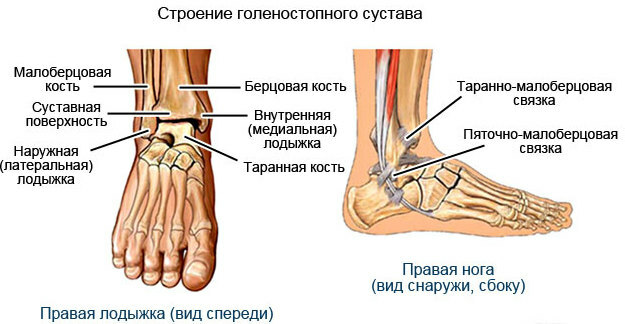
The ankle has high mobility, sensitivity, vulnerability. In order not to put the ankle and ankle in particular at risk of injury, you should opt for comfortable, suitable shoes. Since the ankle is a protruding bone, it is imperative to wear comfortable, non-restrictive shoes.
Functions
The ankle participates in the distribution of the weight load on the body and lower extremities, forms the correct center of gravity. This joint is the only one in the human body that can rotate 60-90 °, since none of the joints can bend in the same way.
Thanks to the ankle, a person can perform various types of movements:
- extension and flexion;
- near-axis turns with the foot;
- turning the leg in and out.
The wide range of motion allows the joint to perform many functions.
So, for example, without an ankle it would be impossible:
- stay upright;
- avoid the impact of the force of impact when walking;
- make sudden movements without injury, run, jump.
Thanks to the ankle joint, all movements during descent or ascent occur smoothly, without jerking. Any injury to the articulation of the ligaments and tendons at the level of the ankle leads to loss of foot mobility.
Structure
The ankle is not an independent joint, but a part of the ankle, which is involved in the distribution of the body's load on the lower limb.
Since the bulk of the weight during movement rests on the legs, without the ankle, it would be impossible to change the direction of movement of the foot and make turns. Ankle anatomy will help you get an idea of how the musculoskeletal system works in a given area of the body.
At the junction of the talus with the fibula and tibia, the ankle is localized. The talus is the largest portion of the lower leg. There is a block ledge on top of it.
The ankle (ankle) is on both sides of each leg. Bony outgrowths in the lateral parts of the ankle can be conditionally divided into internal, which is a continuation of the tibia, and external, completing the fibula. Cushioning during movement is provided by hyaline cartilage, which covers the surface of the bony articulation on both sides.
In order for the bone structures to be held together, their mobility is limited by the ankle ligaments:
- interosseous, stretching along the entire length of the lower leg;
- lower back, preventing the lower leg from turning to the inside;
- anterior inferior peroneal, which keeps the foot from external eversion;
- transverse, allowing you to fix the foot in the anatomically correct position.
The performance of the functions of the ankle joint would be impossible without the muscle tissue that surrounds it. Each muscle is attached to a specific point on the foot and has its own purpose. The muscles are connected to the ankle, which are responsible for flexion and extension of not only the joint, but also the toes, as well as pronators, which provide rotational movements.
Diseases and injuries
The protruding part of the ankle is considered a very vulnerable place in the human body. Ankle problems are more often diagnosed in older people, as well as in people with increased physical exertion, playing sports. Treatment for the ankle depends on the cause of the injury.
The factors causing ankle swelling can be roughly divided into two categories: injury and disease.
| Which group does | Violation name | Short description |
| Trauma | Dislocation | There is damage to the ligaments, displacement of the joint, which is accompanied by swelling and hematoma. |
| Injury | Appears as a result of a strong blow, collision with any object. Severe bruising pain does not allow you to fully lean on the foot. | |
| Fracture | The most dangerous type of injury, which in some cases leads to disability. At the time of the fracture of the ankle, a sharp pain occurs, a characteristic crunch can be heard. It may take more than six months for treatment and full recovery. | |
| Sprains and tears of ligaments, tendons | Such an injury occurs with an unsuccessful jump, a fall with a twisting of the foot. Internal hemorrhages appear, cartilaginous structures are affected, ankle deformation is possible. | |
| Diseases | Arthrosis | Often it develops against the background of trauma, prolonged stress due to excess weight, genetic predisposition. |
| Arthritis | It proceeds in the form of a protracted inflammatory process, accompanied by external hyperemia, suppuration and accumulation of joint fluid. | |
| Gout | The main cause of the disease is kidney disease or renal failure, leading to an increase in the concentration of uric acid in the blood. With gout, crystalline deposits are formed within the ankle and other joints, resembling subcutaneous growths. |
Symptoms
It is impossible to diagnose the disease with maximum accuracy or establish the type of ankle injury based on clinical manifestations and patient complaints alone. Symptoms can indicate the cause of the ankle injury and the severity of the condition, however, to establish a treatment regimen, the patient will have to undergo a diagnostic examination.
With dislocation
The ankle, which is located at the base of the lower leg, undergoes noticeable deformities with dislocations and subluxations. The ankle thickens, often covered with hematomas of varying degrees.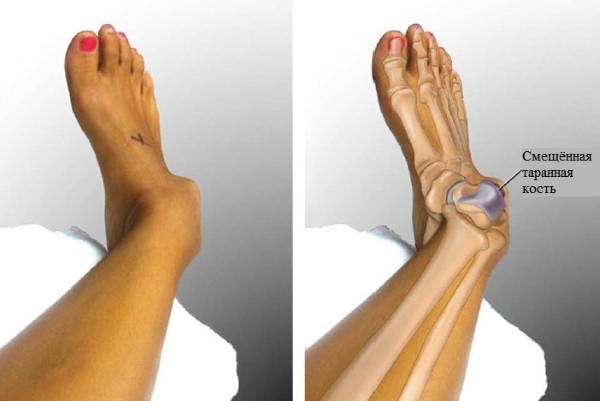
In addition, the patient is haunted by a feeling of squeezing, pain in the joint, which increases with exertion, and a local increase in body temperature in the ankle area. It is also worth noting the limited functionality of the limb and the possible change in the shape of the ankle, especially with complete dislocation.
With a bruise
This injury is considered the most common. With a bruise, an acute, intense pain occurs, which after a while dulls, acquires a background aching character.
Since there are many small capillaries in the tissues of the joint, they rupture as a result of a strong blow, causing an inflammatory process. Due to the accumulation of exudate, an ankle injury is manifested by swelling not only of the protruding bone of the ankle, but often of the entire foot.
Unlike a dislocation, with a bruise, the patient does not lose the ability to stand on his leg, despite the painful sensations. After a bruise, the ankle area acquires a bluish tint and severe swelling.
With a fracture
In some cases, patients are diagnosed with ankle fractures, combined with dislocations or subluxations. The pain of a fracture increases many times over when you try to move your leg or feel the ankle area. In addition, it can radiate to other parts of the limb. Diagnosing a fracture is often straightforward if there is pathological mobility and joint crunch.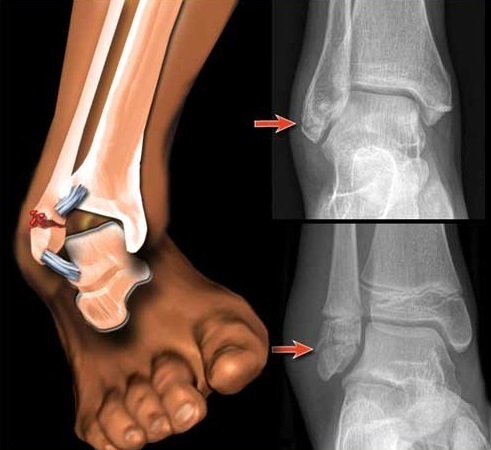
Ankle fractures can be open or closed. In the second case, extensive bruising is formed, the joint increases in volume, and the displacement of the foot becomes visually noticeable. Open fractures are accompanied by rupture of the skin, damage to muscle tissue, ligaments and tendons.
In case of stretching and rupture of ligaments, tendons
This type of injury occurs, as a rule, when the anterior and talofibular part of the foot is damaged. The ligamentous apparatus of the ankle suffers from a sudden tuck of the ankle.
When stretching, the pain is mild, but at the beginning of the movement it increases, and with a rupture, the painful sensations are of greater intensity. Ligament injuries occur simultaneously with hemarthrosis, rapidly developing edema.
With arthritis
With this disease, as a rule, more than one joint is affected. Arthritis itself is not an infectious disease, but most of its types are microbial in origin.
Patients, faced with arthritis, may notice the involvement in the pathological process of the joints not only of the lower, but also of the upper extremities. People complain of constant pain of moderate intensity, which does not interfere with physical activity. Also, with arthritis, the deformation of the shape of the ankle is visually noticeable.
With arthrosis
Frequent injuries of the ankle joint can become one of the root causes of the development of this pathology. With deforming arthrosis, the surface of the articulation bones loses their natural smoothness and ability to slide. The ankle swells, swelling appears in the ankle, gait changes.
With gout
Gout belongs to a group of diseases caused by metabolic disorders. With this disease, the skin on the ankle acquires a reddish tint, and the joint itself visually seems larger due to the formation of growths.
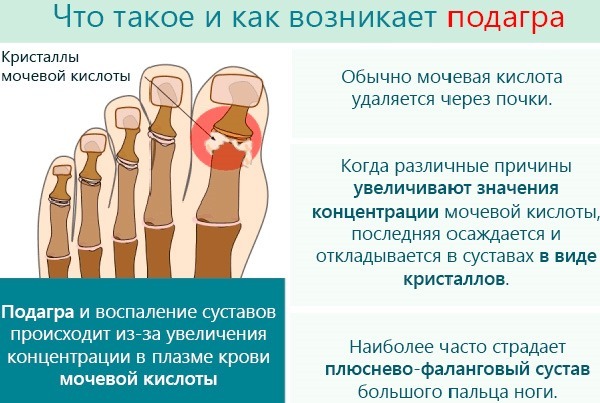
It hurts to touch the ankle. Symptoms get brighter after eating foods high in purines, oxalic acid.
Causes of the appearance of diseases
The ankle (ankle) is located between the foot and the lower leg, but its condition can be influenced by processes occurring in various body systems.
So, for example, due to obesity, the load on the limbs and joints increases, therefore, parts of the ankle, which has a complex physiological structure, become inflamed and injured. Also, the cause of crystalline deposits in the joints with gout is metabolic disorders against the background of excessive concentration of uric acid.
Ankle injuries are often encountered by patients who are overweight and have a weak muscular system.
In addition to injuries that provoke sprains and ligament ruptures, bruises, dislocations, fractures, disrupting the integrity and functionality of the ankle can:
- degenerative-dystrophic processes;
- long-term inflammatory and rheumatic diseases;
- infectious pathologies;
- malfunctions of the endocrine system, metabolism;
- benign and malignant neoplasms.
Other factors
Ankle pain can be caused by wearing tight, uncomfortable shoes. For those who are overweight, this symptom often occurs on the outside of the ankle, regardless of the presence or absence of physical activity.
Even if the patient is more likely to be at rest, they may find swelling of the ankle along with decreased mobility of the foot. In the absence of treatment and failure to take measures to reduce body weight, the patient may face complete immobilization of the ankle.
The constant use of high-heeled shoes can be affected in a similar way. In pregnant women, the ankle may hurt due to the increased stress on the joints of the lower extremities.
By the way, it is in women that ankle swelling is considered a common problem. The reason for this phenomenon can be hidden in a sedentary lifestyle and even, on the contrary, a long stay on the legs. In both cases, stagnation of liquid tissues occurs.
Diagnostics
Since the ankle joint is considered one of the most difficult elements of the musculoskeletal system, it is important to undergo a detailed examination in order to detect a defect and make an accurate diagnosis. The decision on the appropriateness of a particular diagnostic procedure is made by the attending physician.
For injuries and diseases of the ankle, it is recommended to undergo one or more of the following types of tests:
-
X-ray - the least costly and simple method for diagnosing a joint. To assess the condition of the ankle, pictures are taken in several projections, which makes it possible to differentiate not only one type of injury from another, but also to reveal the root cause of the pathological process.
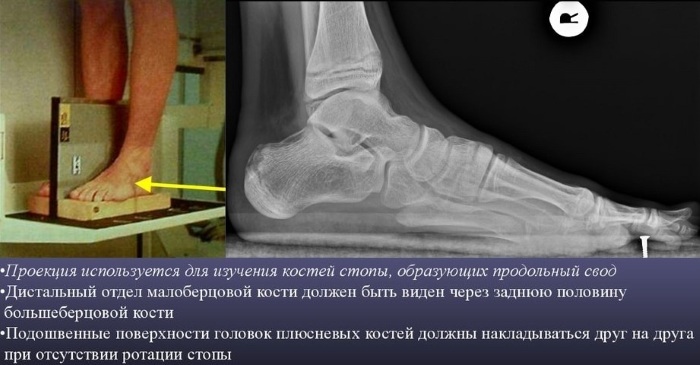
- Ultrasound - this diagnostic method is used much less frequently than the previous one due to the low level of information content. The advantages of ultrasound of the ankle and ankle are the affordable cost, the speed of the procedure, and the absence of a negative effect on the tissues. With the help of an ultrasound sensor, it is possible to detect internal hemorrhage in the joint capsule, the presence of foreign bodies, and assess the condition of the ligaments.
- CT scan is considered an effective diagnostic method that allows you to get the most objective picture of the disease. Computed tomography makes it possible to exclude or confirm the presence of neoplasms and the development of arthrosis at an early stage.
- MRI the ankle, like any other joint, will indicate problems with tendons, ligaments or blood vessels. Most often, magnetic resonance imaging is prescribed when a ligament rupture is suspected.
- Arthroscopy differs from previous non-invasive procedures in that during it directly into the joint capsule is injected a special camera that allows the doctor to examine in detail the inner surfaces of the ankle and clarify the cause violations.
The most effective and reliable research method is the latter, arthroscopy. This manipulation can also be prescribed during the treatment of the ankle. The conclusions of diagnostic specialists are used together with the results of physical examination, laboratory tests to determine the final diagnosis and treatment tactics.
Ankle and ankle diagnostics can be performed in almost any medical facility of a wide profile, regardless of the form of ownership and type of insurance. The compulsory health insurance program provides for the possibility of free passage of any of the above procedures. in the presence of a special quota, the receipt of which in turn can occur with a long wait (sometimes several months).
In medical centers and clinics specializing in complex diagnostics of the musculoskeletal system, the cost of these procedures varies in within the following values (depending on the region and the pricing policy of a particular medical institution):
- radiography - 300-500 rubles;
- Ultrasound scan - 800-1100 rubles;
- CT scan - 1800-2500 rubles;
- MRI - 2,400-4,000 rubles;
- arthroscopy - from 20 thousand rub.
When to see a doctor
You don't have to wait for the right moment to visit a specialist. It is necessary to seek qualified medical help at the first manifestations of the disease or immediately after an ankle injury.
Such pathologies are treated by:
- traumatologist;
- surgeon;
- orthopedist;
- rheumatologist.
Any of these specialists will have guesses about a possible diagnosis after the first appointment. If the need arises, the attending physician will refer the patient for consultation to a gynecologist, endocrinologist, urologist.
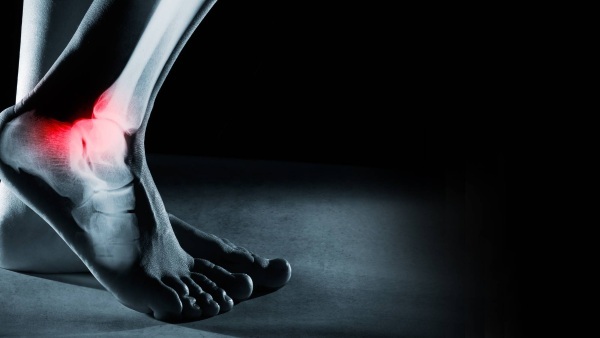
Regardless of the stage of the disease and the degree of its neglect, in no case should the problem be aggravated by self-medication. Also, do not endure pain, discomfort in the ankle, hoping that the discomfort will go away on its own. Moreover, if during the examination, thickened structures, fiber delamination, and the development of deformation processes were found.
Prophylaxis
The ankle (ankle) is in the group of joints that have an increased risk of injury. Unfortunately, there is no universal way to prevent fractures, bruises, dislocations and sprains.
However, you can avoid the development of diseases such as arthrosis or arthritis of the ankle if you follow the simple recommendations from doctors:
- do not start treatment for existing injuries of the ankle;
- avoid eating harmful and useless foods;
- stop drinking alcohol and smoking;
- get moderate physical activity every day (for example, do at least 10 thousand. steps);
- refuse to engage in traumatic sports, preferring yoga, stretching and flexibility exercises, swimming;
- fully rest and get enough sleep.
Particular attention should be paid to joint health in mature patients. In order to prevent arthrosis and arthritis after 50 years, men and women are advised to have annual medical examinations with an orthopedic surgeon.
Treatment methods
Treatment of diseases and injuries of the ankle can take place both on an outpatient and inpatient basis.
For ankle injuries, therapy is based on three main principles:
- relief of pain;
- removal of inflammation and swelling;
- launch of regeneration processes.
Anesthesia
To eliminate the pain syndrome with bruises or sprains, drugs of general action are used.
A moderate analgesic effect is given by such drugs as:
- Analgin;
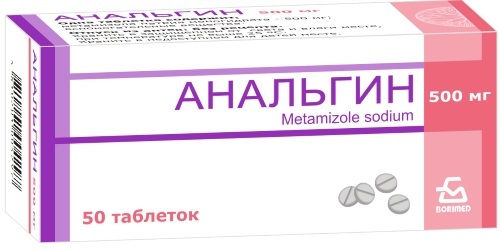
- Ibuprofen;
- Tempalgin;
- Pentalgin;
- Ketones;
- Nimesil.
You need to drink these funds 2-3 times a day. All of them, with the exception of Nimesil, are available in pill form. Nimesil is sold as a dry powder for oral solution in 2 g sachets. The same remedies can be used in the treatment of pain in arthritis and arthrosis.
In case of fractures and dislocations, especially on the first day after injury, it is better to use drugs in an injection form (Ketonal, Diclofenac, Baralgin). The dosage and course of treatment is determined by the doctor on an individual basis. As a rule, the patient is given an injection in the morning and in the evening for 2-4 days.
Anti-inflammatory therapy
Compresses are applied to the injured ankle to relieve swelling and inflammation. In the first days after the injury, it is imperative to use cold. Exposure to low temperatures will avoid the appearance of hemarthrosis (hemorrhage in the joint capsule). Cold is applied every 2 hours for 15-20 minutes.
One of the common treatments for joint inflammation is compresses with Dimexidum. The solution is not used in its pure form, since the drug can cause burns. For closed injuries of the ankle and ligaments, swelling and swelling of the ankle against the background of degenerative processes, it is necessary to prepare a solution of Dimexide and water in a ratio of 3: 7.
To relieve edema, you can also use Voltaren and Dolobene ointments.
Healing ointments
The following drugs will help to activate the regeneration processes in the ankle joint:
- Finalgon (contains nicoboxil and nonivamide);

- Apizartron (active ingredients are methyl salicylate and ally isothiocyanate);
- Capsicam (active ingredients - turpentine, dimethyl sulfoxide, camphor, nonivamide).
These ointments have a warming effect. Their medicinal components penetrate deep into the tissues, stimulating healing. According to patient reviews, relief occurs after 2-3 days of use. Preparations for external use are necessary to replenish the deficiency of bioactive compounds. The prescribed ointment is applied in a thin layer to the damaged ankle 2-3 times a day for 7-10 days.
Also, doctors recommend the use of local angioprotectors in the treatment of injuries and diseases of the ankle joint.
These drugs include:
- Heparin ointment;
- Troxevasin;
- Lyoton.

The use of these drugs will prevent stretching of blood vessels and venous stasis of blood. With prolonged use (within 2-4 weeks), these ointments contribute to better lymph drainage, increased capillary resistance and resorption of hematomas.
Possible complications
The lack of timely qualified assistance for diseases and injuries of the ankle can lead to unpleasant consequences in the future.
Among the complications it is worth noting:
- anatomically incorrect bone fusion;
- the subsequent development of arthrosis;
- chronic edema;
- lameness;
- complete immobility of the foot (disability).
Any disease or injury to the ankle (ankle) that is within the ankle joint requires serious treatment. It is impossible to independently assess the degree of damage without a preliminary examination.
It is important to remember that in the early stages, joint problems can be treated with conservative methods. With old injuries that provoke destructive and degenerative changes, the chances of full recovery are minimal.
Ankle videos
Ankle Anatomy:


